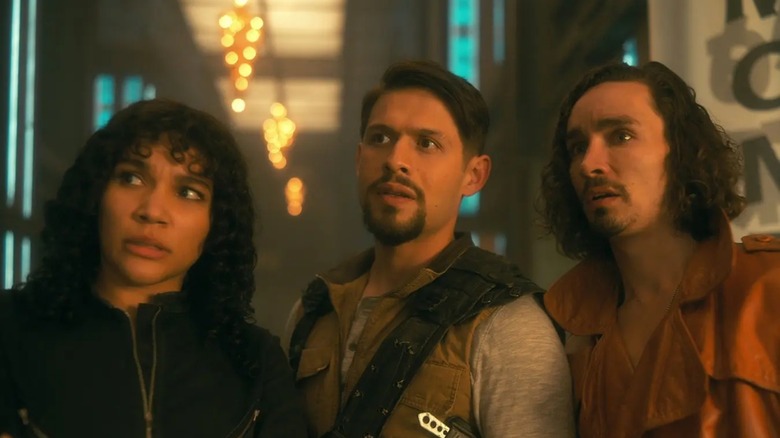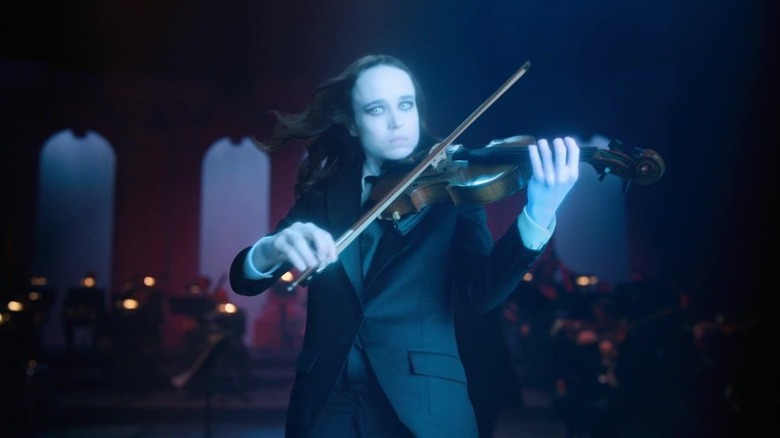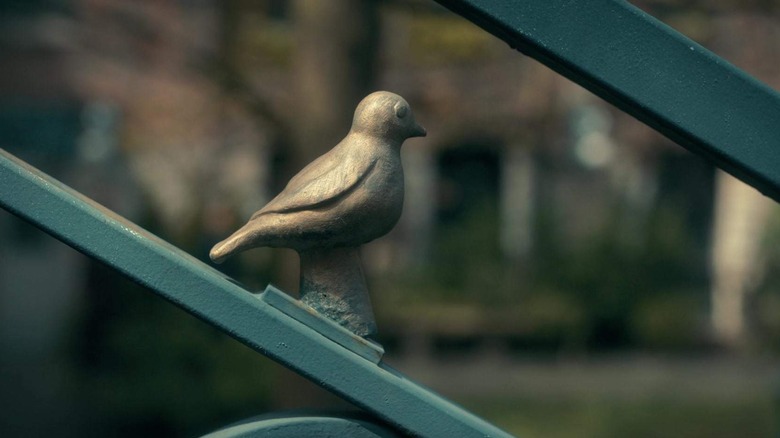How The Umbrella Academy Works Hand-In-Hand With Its Comic Book Counterpart
"The Umbrella Academy" is having quite the moment: according to Variety, the newly released season 3 racked up 125 million hours of watch time within the first five days. Loosely based on the comics by Gabriel Bá and My Chemical Romance singer Gerard Way, "The Umbrella Academy" follows the superpowered Hargreeves siblings (collectively known as the Umbrella Academy) as they deal with family drama and prevent multiple world-ending catastrophes — or at least try to.
While interpersonal conflicts tend to take center stage, the world that the Umbrella Academy inhabits is zany and exciting: there's a holier-than-thou institution of time-traveling assassins, aliens disguised as humans, and every season manages to sneak in a group dance number. Oh, and the soundtrack is amazing. It's the type of world that really feels one-of-a-kind, but with a limited Netflix run, there's only so many avenues that can be explored on screen.
Fortunately, the differences between the comics and the show allow fans to essentially experience two separate versions of the project, opening up as many branches of Way and Bá's wild world as possible. But that doesn't mean that the show has forgotten about its roots. Instead, showrunner Steve Blackman has a habit of referencing the comic without stepping on its creators' toes.
The Umbrella Academy honors the comics, but takes its own path
While many of the characters are still the same, fans of Netflix's "The Umbrella Academy" would not recognize the world of the comics. Many of the basic plot points are roughly equivalent — Number 7's orchestra performance has dramatic consequences, the siblings travel to 1960s Texas, the Umbrella Academy meets a Sparrow-associated group that challenges them — but the details in between (including the siblings' powers) tend to vary wildly.
Although Blackman is forging his own path through the Umbrella-verse, he's careful not to get too far ahead of himself. In an interview with Uproxx, he said that he does not want to do his own thing with the story because he "really respect[s]" Bá and Way. Instead, he'd rather "work collaboratively with them [and not] feel that I've gone so off where it's a totally different thing."
Ultimately though, the more "The Umbrella Academy" progresses, the further it seems to stray from the comics. Season 3 saw complex interactions with the Sparrow Academy, an alternate timeline equivalent with a new group of adoptive siblings that has only shown up for a single panel in the comics. And although Blackman told IGN that Way and Bá are excited to produce 10 comic volumes, he already has a satisfying ending in mind that he is hoping to wrap up by the fourth season.
Easter eggs reward clever viewers — and comic fans
While it's tempting to keep watching "The Umbrella Academy" purely to see which wacky developments are up next (a sentient, floating, dread-inducing cube joining the family, anyone?), Blackman has included so many Easter eggs — both foreshadowing the show's developments and referencing the comments — that we're surprised the Easter bunny hasn't made an appearance in behind-the-scenes footage. In his interview with Uproxx, Blackman mentions that some of the Easter eggs are subtle enough to "not be seen in the first viewing," giving viewers something new to discover during subsequent viewings. The most clever yet frustrating example? Season 2 includes 43 hidden sparrow motifs (via Newsweek) — a nod to the 43 children with special powers that also foreshadows the Sparrow Academy — setting up a treasure hunt for dedicated viewers.
Many of the Easter eggs in "The Umbrella Academy" also contain subtle references to the comics. For example, observant fans have noticed that Klaus Hargreeves is always barefoot in the show's promotional posters — a wardrobe choice that fits his laid-back hippie vibe, but also one that references the fact that he must be barefoot for his powers to work in the comics. Similarly, in the latest season, the cute dog who hangs around Hotel Obsidian is named Mr. Pennycrumb, a direct reference to the pooch that follows Five Hargreeves around in the comics. While the Easter eggs are always subtle, they're a nice treat for loyal comic readers.


